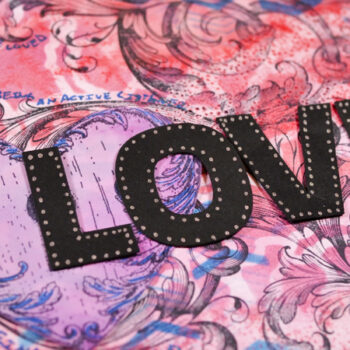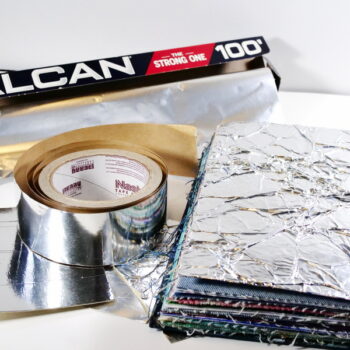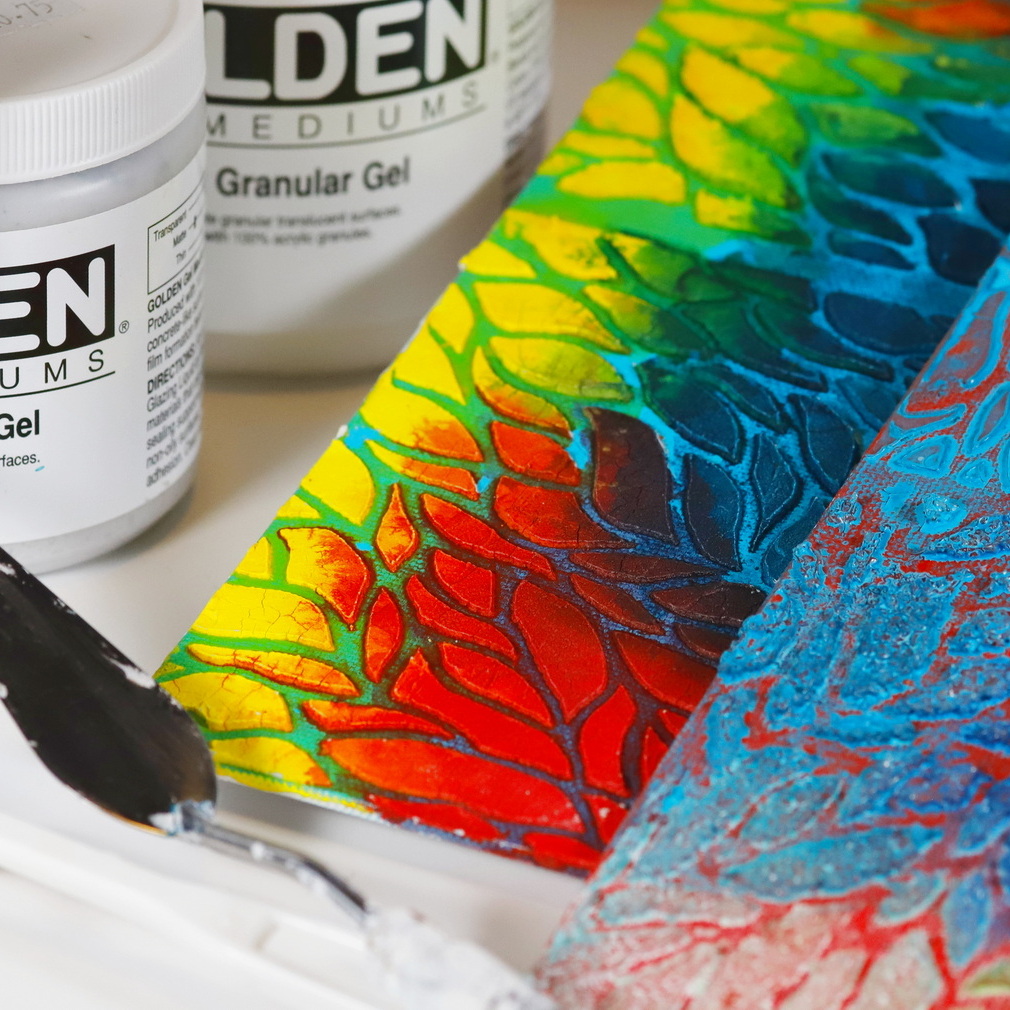
Textured Background Techniques for the Art Journal
I love adding interest to my projects with art journal textured background techniques. These beautiful techniques work for both my art journal projects and canvas projects. Adding texture as part of the initial layer before adding color lends to unique and beautiful results. Textures enhance the final look of your project and can help with design cohesion.
Preparing the Surface

Before adding background textures make sure to add a layer of gesso, especially on stretched canvas surfaces. This will strengthen the surface, add tooth, and allow you to add texture easily to the surface.
Art Journal Textured Background Techniques

There are many art journal texture techniques out there, but here are a few of my favorites to get you started.
Super Heavy Gesso
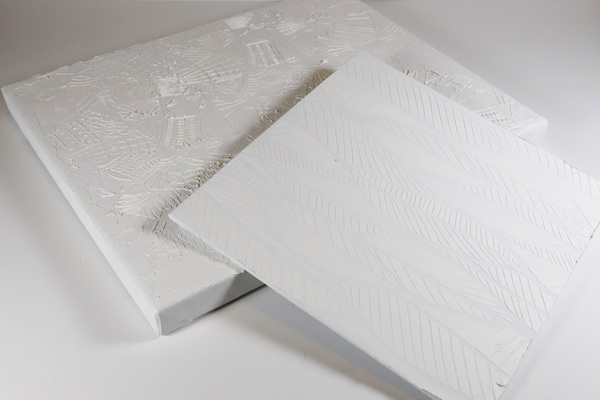
I love the thickness of Super Heavy Gesso on my projects and it’s a great way to add textures to canvases. My favorite technique is to add Super Heavy Gesso through a stencil using palette knife.
When using this technique on a large canvas, I tend to use a combination of stencils and palette knife mark making. Instead of looking for a perfect image, I like to add super heavy gesso through the stencil using a palette knife.
Once I have added a first layer of gesso, I then change the angle of the stencil and overlap it with the texture I have already added to the surface. Any harsh stencil lines are removed using a palette knife.
This same technique can be easily applied to an art journal page. I generally add a much thinner layer of super heavy gesso in a book compared to on a painting. The surface of the canvas or board is much stronger, so I can add a thicker layer than I usually would in a book.
Tissue Paper

Tissue paper is a versatile medium that creates beautiful art journal textured backgrounds. Start by scrunching up tissue paper and then laying it flat on the surface. Adhere the paper to the surface with your favorite matte or gloss medium.
There will be small folds and textures that you will be able to see even after the tissue paper is glued down. You can do this in small areas of your art journal or across the entire page depending on the effect you are looking to create.
On a larger painting where this is primarily a background texture, I add the same texture across the entire painting. This way it doesn’t pull attention away from the image that I am painting on top.
Drywall Joint Tape

I was on the hunt for interesting textures and found drywall joint tape in the hardware store. Using a regular gel medium, I attached it to my canvas surface after I had applied gesso. I would recommend a heavier medium to make sure that it holds the drywall tape in place. This technique will work in an art journal as well as the tape is very pliable.
If you don’t want white showing through behind the tape, add a layer of color to the surface before adding the drywall tape. The grid of the drywall tape is quite fine, making it difficult to put color through the tape.
Acrylic Pastes
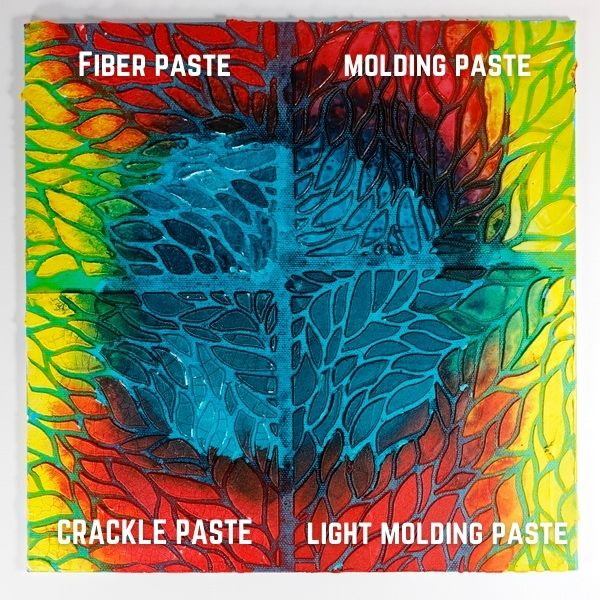
There are a variety of acrylic pastes that can be used to create textured backgrounds in your art journal projects. As acrylic pastes are opaque, they are a great addition to the grounding textures of your art journal or canvas project. You can apply them through stencils and with palette knives to get a variety of effects.
Acrylic pastes differ from super heavy gesso in many ways. Super heavy gesso will create a uniform opaque surface that takes paint well. While modeling paste, fiber paste or crackle paste will absorb paint and liquid mediums in a very different way and a different rate. This can create fun and interesting variations to your project. But be aware that it will create a different finish than the super heavy gesso.
Acrylic pastes also mix well with acrylic paints and inks to make custom colors. The acrylic pastes also absorb watercolor and liquid acrylic mediums creating interesting effects to your art journal pages.
Acrylic Gels
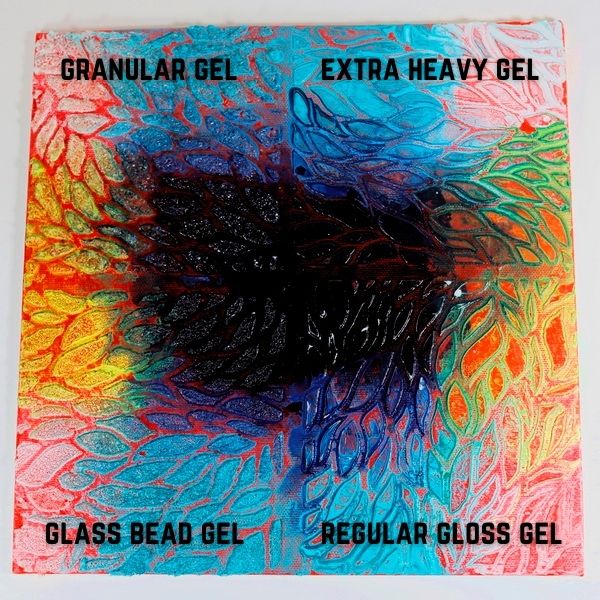
Acrylic gels differ from acrylic pastes as their properties are quite different. Gels will generally dry clear so they can create subtle transparent techniques in an art journal. They also mix well with paints which can create beautiful, glossy textures on your art journal pages.
You can use similar techniques to apply these gels as you would the pastes. Where the gels really shine is with the different materials that can be added to them. There is a variety of gels available that have sand, glass beads and other things added to them. Many of these are best added straight to the surface with a palette knife due to their chunky texture.
I do add these through a stencil in my journals, but it does require a bit more finesse to get a good image. The key is to have a more open image so that the gel works well on the surface.
Gels will dry shiny and slippery, so they will create a different effect on your page or on a painting. Unlike pastes that absorb mediums, you will need to add several layers of paint to get solid color on top of the gels. But they are great for creating subtle effects, resists and other techniques to your art journal backgrounds.
Gelli Prints
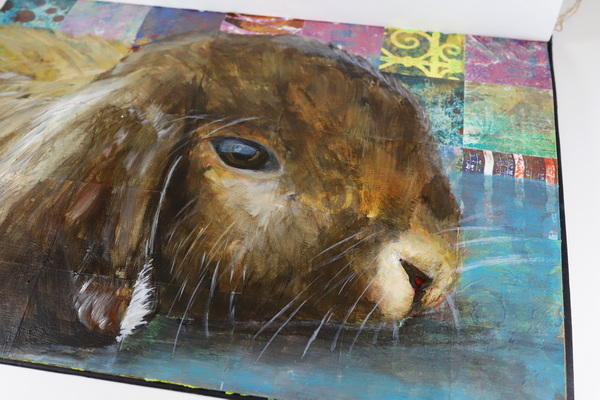
One of my favorite art journal textured background techniques is using Gelli prints on my projects. By using decoupage to add these to your art journal pages or canvases, this creates beautiful colors and patterns to your pages.
I love painting over some areas of the Gelli prints and letting other areas peek through. The best way to adhere Gelli prints is with a regular or heavy gel depending on how heavy the paper you used to print with.
The Gelli prints can be cut in a variety of shapes and added to art journal pages. I like creating grids with the prints because of the variety of designs you can have on one canvas. The grid itself can help create a stronger composition without having to draw lines.
Questions?
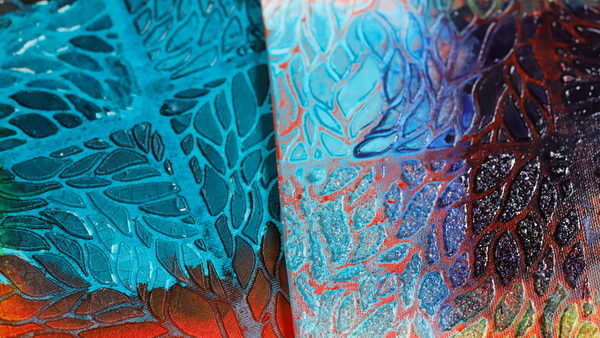
Any questions on these art journal textured background techniques and how to add them to your art journal or canvas projects? I would love to answer any questions that you have by commenting below. I hope that this gives you new ideas on how to confidently add textures to your creative projects.
Project Supply List
- Stretched Canvas
- Dina Wakley Media Blue Art Journal
- Gesso: Liquitex Super Heavy Gesso, White Gesso
- Stencils: Stencil Girl Clustered Leaves Stencil, StudioLight Grunge Mask SL-GR-MASK54
- Liquitex Matte Medium
- Ranger Craft Scraper
- Palette Knife
- Art Alternatives Texture Tool
- Princeton Catalyst 1” Brush
- Lineco Acid-Free Tissue Paper
- Drywall Joint Tape
- Golden Acrylic Pastes: Fibre, Crackle, Light Molding and Coarse Molding Pastes
- Liquitex Modeling Paste
- Golden Acrylic Gels: Clear Granualr, Glass Bead and Regular Gloss Gels
- Liquitex Gloss Super Heavy Gel
- Golden Iridescent Copper (Fine) Fluid Paint
- Distress Sprayer Water Bottle
- Water Container
- Paper Towels
- Non-Stick Craft Mat




